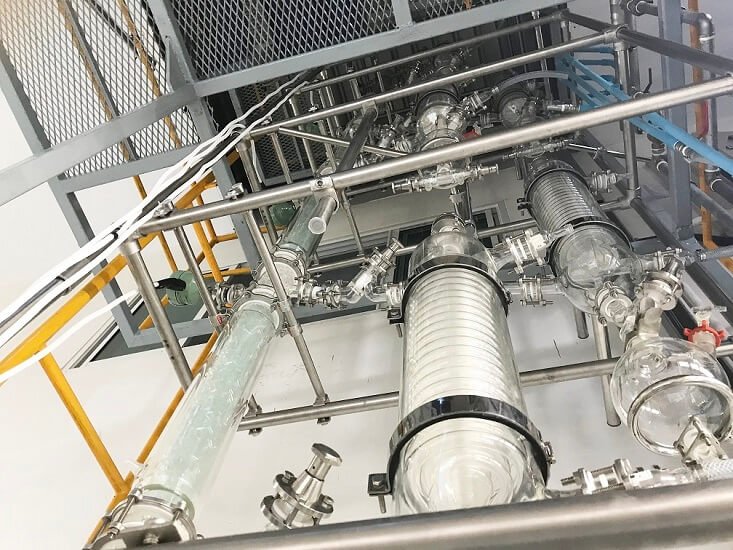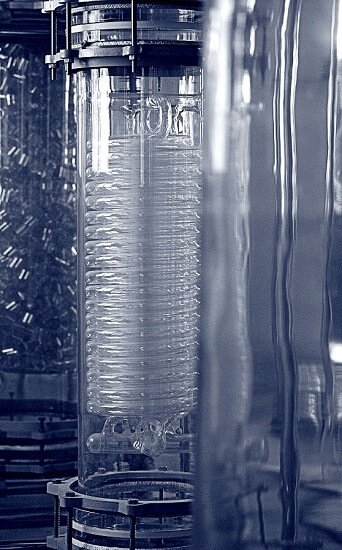Coil Condensers
Coil Condensers are commonly used for the process of vapor condensation as well as examines the cooling of liquids. Condensers are manufactured by binding many parallel coils together in a glass shell. These coils are built of different diameters using various bore tubes.
Design of Coil Condenser
The Coil condensers are commonly used to separate or remove heat from refrigeration or an air-conditioning system. Occasionally they are accustomed to the intention of heating the air streams. Coil condensers are among the four essential components in an air-conditioning or the refrigeration cycle. The refrigerant then enters the system as a superheated gas and gets condensed in the coil tubes. The refrigerant then leaves the coil in the form of a liquid.
Methods of Using the Coil Condensers
Vapors from bottom
It is effortless to install the Vapor method over a reactor. However, it may result in the condensate to return at its condensing temperature. You must be careful while working with this method that the condensate must not be in excess, and it must not lead to the blocked coils and create back pressure. Usually, the use of a reflux divider is advised to be installed below the condenser that will take the distillate out.
Boilers
Boilers are usually used for the evaporation process carried out for various liquids by passing the hot steam through the coils. Boilers are manufactured by combining many parallel coils in a glass shell. The coils in the boilers are specially designed to provide you with a much bigger cross-section than Condensers.
Angled Hose Connector Assemblies
Angled hose connector assemblies are usually made from either metal or plastic and must connect the condensers to the flexible hose. These can be provided with a rubber gasket, a mating flange, and nut bolts.
Immersion
Immersion-type heat exchangers are generally used to control the exothermic reaction happening in the glass vessels. Immersion-type heat exchangers can be used along with the vessels that have a bigger and wider bottom outlet. Such heat exchangers come with a central hole in the coil battery so that a stirrer can be mounted at the bottom of the heat exchanger.
In most of the applications, the cooling water is usually used in the coils with a maximum pressure of 2.7 bar g; you can also use them along with the hot steam having a maximum pressure of 3.5 bar g. In the latter case, all the coils are entirely immersed in the liquid. Immersion procedure is not advised to use with the products having crystallization tendency.
Product coolers
Product coolers are generally used to cool various types of liquids that are used for the process of cooling the distillates in the distillation system. Unlike other coil condensers, among the product coolers, the product passes through the coil battery, and the coolant passes through the shell. This transfer process will give the product more time to get cooled.
Preventive measures while using coil condensers
- Let the vapors pass via shell only.
- Keep the maximum coolant pressure to 2.7 bars.
- Coolant flow must be adequate for the process.
- The use of steam in the coil is prohibited.
- Coolant must be heated but not to its boiling point.
- Turn the coolant control valve slowly.
- Let the coolant drain freely.
- You can use coils made from brine in a closed circuit.
- Connect the water main to a flexible hose.
- Ensure water left in the coil doesn’t freeze.
- Condensers must be mounted only in a vertical position
Final Thoughts
Ablaze Export Pvt. Ltd. is one of the leading Coil condensers manufacturers in India. We are into the production of many standard chemical process equipment as well as we also provide customized process equipment. We have years of experience serving customers across India as well as delivering our products across the world.
Dimension Table
| Heat Transfer Area (HTA) | Jacket | Coolant | *FCSA | CAT. REF. | ||||||
|---|---|---|---|---|---|---|---|---|---|---|
| (m2) | DN | D/DN1 | L | L1 | L2 | Type | Cap. Ltr. | Rate Kg/h | SHELL (cm2) | |
| 0.20 | 40 | 16 | 600 | 85 | 100 | A | 1 | 750 | 4.5 | AHE1.5/2 |
| 0.35 | 50 | 16 | 600 | 90 | 100 | A | 1.25 | 1300 | 5 | AHE2/3.5 |
| 0.35 | 80 | 16 | 600 | 90 | 100 | A | 2 | 1300 | 5 | AHE3/3.5 |
| 0.50 | 100 | 19 | 600 | 120 | 100 | A | 4 | 2400 | 30 | AHE4/5 |
| 0.60 | 100 | 19 | 750 | 120 | 100 | A | 6 | 2400 | 30 | AHE4/6 |
| 1.00 | 150 | 25 | 600 | 150 | 100 | B | 9 | 2600 | 52 | AHE6/10 |
| 2.50 | 300 | 25 | 600 | 250 | 125 | B | 25 | 5700 | 175 | AHE12/25 |
| 4.00 | 300 | 25 | 900 | 250 | 125 | B | 35 | 5700 | 175 | AHE12/40 |
| 4.00 | 400 | 25 | 600 | 265 | 125 | B | 60 | 6200 | 450 | AHE16/40 |
| 5.00 | 400 | 25 | 700 | 265 | 125 | B | 70 | 6200 | 450 | AHE16/50 |
| 6.00 | 450 | 40 | 750 | 325 | 150 | B/C | 100 | 4800 | 820 | AHE18/60 |
| 8.00 | 450 | 40 | 900 | 325 | 150 | B/C | 110 | 6200 | 820 | AHE18/80 |
| Note : L / L1 / L2 may be + 10mm. | ||||||||||
| * FCSA- Free Cross Section Area . | ||||||||||
Looking for Best Manufacturer of Glass Pilot Plants & Turnkey Projects?


